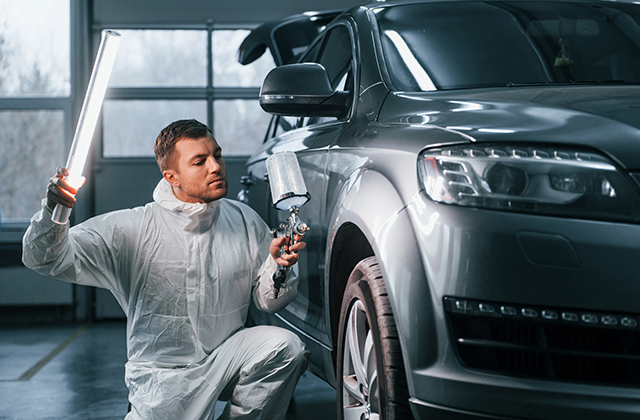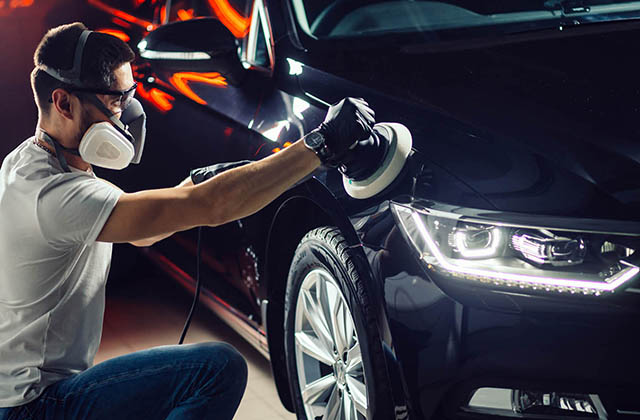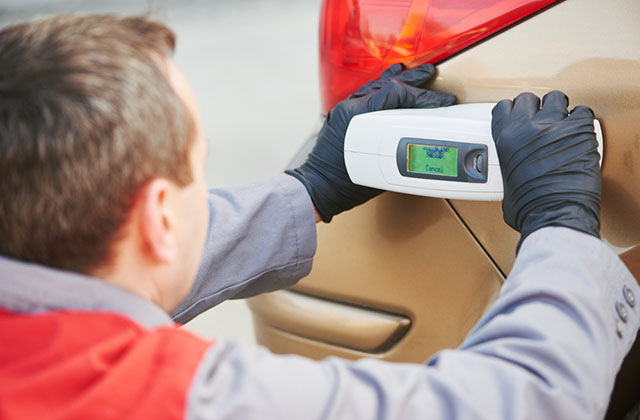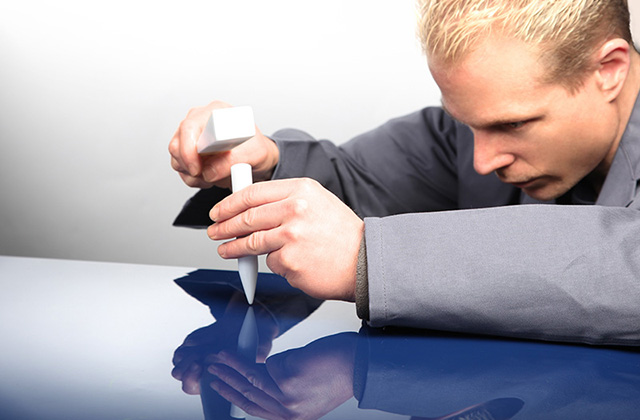Automotive painting is an intricate craft that requires a blend of artistic talent and technical expertise. Whether you’re a seasoned professional or an enthusiastic novice, mastering the art of automotive painting can elevate your work and ensure stunning results every time. In this guide, we’ll explore the top tips for perfecting your automotive paint technique, with a special focus on automotive paint correction, a crucial skill for achieving flawless finishes.
Understanding the Basics of Automotive Paint
Before diving into advanced techniques, it’s essential to grasp the fundamentals of automotive paint. The painting process typically involves several layers, each serving a specific purpose:
- Primer: This base layer prepares the surface for paint, providing adhesion and preventing rust.
- Base Coat: The base coat contains the color and provides the aesthetic appeal of the paint job.
- Clear Coat: This protective layer adds shine and durability, safeguarding the paint from environmental damage.
Preparing the Surface
Preparation is the cornerstone of a successful paint job. A well-prepared surface ensures better adhesion and a smoother finish. Here are some key steps:
- Cleaning: Thoroughly clean the surface to remove dirt, grease, and contaminants. Use a degreaser and soap designed for automotive surfaces.
- Sanding: Sanding the surface smooths out imperfections and provides a rough texture for the primer to adhere to. Start with coarse-grit sandpaper and progress to finer grits.
- Repairing: Address any dents, scratches, or rust spots before painting. Use body filler and sand it smooth to create a seamless surface.
Choosing the Right Paint
Selecting the appropriate paint is crucial for achieving the desired finish. Consider the following factors:
- Type of Paint: Common types include acrylic enamel, acrylic lacquer, and urethane. Each has its pros and cons, so choose based on your project requirements.
- Color Matching: If you’re repairing or touching up, ensure the new paint matches the existing color. Use color codes or consult a professional for precise matching.
- Quality: Invest in high-quality paint and clear coat for better durability and a more professional finish.
Applying Primer
A good primer lays the foundation for a smooth and even paint job. Follow these steps for effective priming:
- Mixing: Mix the primer according to the manufacturer’s instructions. Use a paint gun for even application.
- Application: Apply the primer in thin, even coats. Allow each coat to dry before applying the next. Typically, two to three coats are sufficient.
- Sanding: Once the primer is dry, sand it with fine-grit sandpaper to create a smooth surface for the base coat.
Applying the Base Coat
The base coat provides the color and visual appeal of the paint job. Here’s how to apply it effectively:
- Mixing: Mix the base coat thoroughly to ensure consistent color and viscosity.
- Spraying: Use a high-quality paint gun and apply the base coat in thin, even layers. Hold the gun at a consistent distance and use smooth, overlapping strokes.
- Drying: Allow each coat to dry completely before applying the next. Typically, two to three coats are needed for full coverage.
Applying the Clear Coat
The clear coat adds depth and protection to the paint job. Here are the steps for a flawless clear coat application:
- Mixing: Mix the clear coat according to the manufacturer’s guidelines. A well-mixed clear coat ensures a glossy finish.
- Spraying: Apply the clear coat in thin, even layers. Maintain a consistent distance and use overlapping strokes to avoid runs and drips.
- Drying: Allow the clear coat to cure completely. This process can take several hours to days, depending on the product used.
Automotive Paint Correction: Achieving a Flawless Finish
Automotive paint correction is the process of removing imperfections from the paint surface, such as swirl marks, scratches, and oxidation. This step is essential for achieving a showroom-quality finish. Here’s a detailed guide to paint correction:
- Inspection: Begin by inspecting the paint surface under bright light. This helps identify imperfections that need correction.
- Washing: Wash the vehicle thoroughly to remove dirt and debris. Use a clay bar to remove embedded contaminants.
- Polishing: Use a dual-action polisher and a range of polishing compounds. Start with a medium-cut compound to remove deeper imperfections, followed by a fine polish for a smooth finish.
- Buffing: Buff the surface with a clean microfiber cloth to remove any residue. This step enhances the shine and clarity of the paint.
- Sealing: Apply a paint sealant or ceramic coating to protect the corrected paint surface. This adds an extra layer of protection and enhances the gloss.
Tips for Avoiding Common Mistakes
Even experienced technicians can make mistakes. Here are some tips to avoid common pitfalls:
- Temperature Control: Paint in a controlled environment to avoid temperature and humidity fluctuations. Extreme conditions can affect the paint’s adhesion and drying time.
- Proper Equipment: Use high-quality tools and equipment. A good paint gun, air compressor, and polishing machine can significantly impact the final result.
- Patience: Rushing the process can lead to mistakes. Allow adequate drying time between coats and steps.
- Safety: Always wear appropriate safety gear, including gloves, masks, and eye protection. Work in a well-ventilated area to avoid inhaling harmful fumes.
Maintaining Your Paint Job
A well-maintained paint job can last for years. Follow these tips to keep your paint looking fresh:
- Regular Washing: Wash your vehicle regularly to remove dirt, grime, and contaminants. Use a pH-balanced car shampoo.
- Waxing: Apply a high-quality wax every few months to protect the paint and enhance its shine.
- Avoiding Harsh Conditions: Whenever possible, park in shaded or covered areas to protect the paint from UV rays and harsh weather.
- Prompt Repairs: Address any chips, scratches, or damage promptly to prevent rust and further deterioration.
Conclusion
Perfecting your automotive paint technique requires a combination of skill, knowledge, and attention to detail. By understanding the basics, preparing the surface properly, choosing the right paint, and mastering the application process, you can achieve stunning results. Incorporating automotive paint correction into your skillset will ensure a flawless finish and elevate your work to professional standards. With patience, practice, and dedication, you can transform any vehicle into a work of art. Browse this site for available auto paint.



